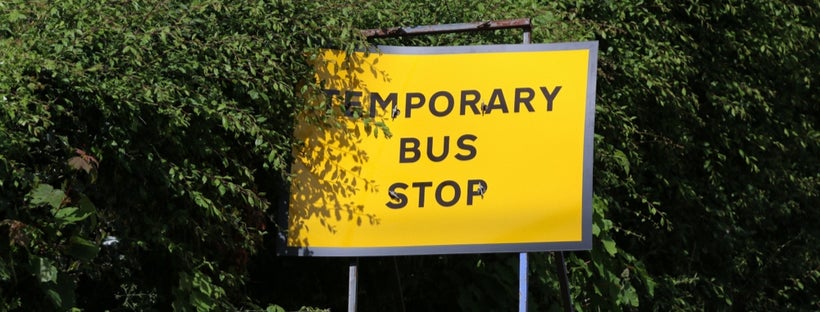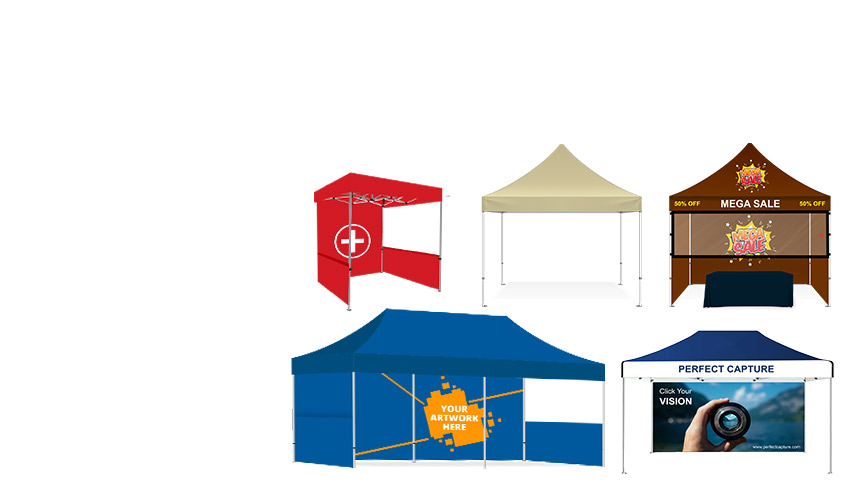Section 705 of the Phoenix Zoning Ordinance deals with the laws governing signs and banners. This statute aims to enforce fair and comprehensive regulations, allowing businesses to attract customers without damaging the city’s aesthetic appeal.
However, one look at the City’s Municipal Code, and you will be left confused with all the jargon and bureaucratic language. Fortunately, we have distilled all the key extracts so that you don’t have to tear your hair out about it. Here’s everything you need to know about putting up banners, signs, stands, and displays in Phoenix.
Glossary of Terms

As per Phoenix’s Municipal Code, the definition of key terms is as below:
- Banner: A temporary sign composed of fabric, pliable plastic, paper, or other light material not enclosed in a rigid frame and secured or mounted so as to allow the atmosphere to move the sign.
- Premise: All contiguous land used and occupied or owned/leased from another party by an establishment. Also included are all buildings, parking, storage and service areas as well as private roads or driveways, which are an integral part of the establishment.
- Signs: Any identification, description, illustration, symbol, or device which is affixed directly or indirectly upon a building, vehicle, structure, or land and which identifies or directs attention to a product, place, activity, person, institution, or business.
Phoenix Sign Ordinance: Primary Objectives
The Phoenix Sign Ordinance was enacted to ensure public welfare and safety, maintenance of the community, and appropriate land usage for communication and advertisement. To elaborate further, the mandate of the law can be summarized as follows:
- Ensuring that signs are designed, constructed, installed, and maintained for public and traffic safety,
- Enabling and promoting positive conditions for sign communication without adversely affecting the environment,
- Supporting the character and development of the General Plan and different zoning districts therein,
- Allowing adequate, effective, and aesthetic signs in industrial and commercial zones for a visually pleasing environment, and
- Ensuring protection of freedom of speech.
Section 705: A High-Level Overview

Section 705 of the Phoenix Zoning Ordinance primarily deals with on-premise signs. It does not include off-premise signs, traffic compliance signs, warning signs, and advertising in or near the public right-of-way.
The key highlights of the section prelude are:
- Unless explicitly exempted, all signs will require a permit from the Planning and Development Department before they are erected, displayed, altered, or relocated.
- Every permit application must be accompanied by engineered plans, approval of standards, and contractor certification.
- Signs not visible from a public street, flags, insignia, pennants, tablets, grave markers, headstones, works of fine art, temporary decorations, signs on vehicles, temporary window signs, political signs (less than 32 sq. ft.), temporary signs, nameplates, and street address signs do not require sign permits.
- Signs that are not permitted include signs that are in the public right-of-way, projecting signs less than 8 ft. above grade, signs that pose a traffic hazard, vehicle-mounted signs, and signs that interfere with road visibility.
General Requirements
All on-premise signs must conform to the following regulations:
- No sign shall be animated or display the optical illusion of sign movement. However, electronic message displays approved with a use permit will not be considered animation.
- Flags, PVC and fabric banners, pennants, streamers, etc., are permitted under special circumstances.
- In the case of illuminated signs, the source of indirect illumination shall be oriented or shielded from a residential use or public thoroughfare.
- For directly illuminated signs, the incandescent source should not exceed 11W per bulb, and the source on any face should not exceed 150W.
- No flashing or blinking lights, pressure sodium light bulbs, and metal halide lights shall be permitted for temporary and permanent lights.
- Signs should not ingress or egress from any door or window and should not be attached to a gutter, fire escape, drain, standpipe, etc.
- No sign should emit sounds that can spill over from the boundaries of the lot.
- Rotating signs are allowed subject to the obtaining of use permits.
Temporary Signs

Temporary signs must also comply with all codes and ordinances as dictated above. Further, they are also subject to the following regulations:
- Temporary signs must be erected no more than two days prior to the event and must be removed no more than a day after.
- Balloons have to be securely fastened and must not project above the roofline.
- Banners must be attached to a solid structure and offer a minimum clearance of 8 ft. above grade. They must be vented to ensure that they can withstand wind pressure.
- Temporary signs for grand openings or business identification are limited to one sign per street front and should be erected for a period not to exceed fourteen days.
- Signs for places of worship are permitted if they are erected only on the future building site, limited to 32 sq. ft. and 8 ft. in height.
Section 705.2 of the Phoenix Zoning Ordinance deals with off-premise signs, which virtually enforces similar regulations, as highlighted above, just for off-premise signs.





























 Posted in
Posted in 







